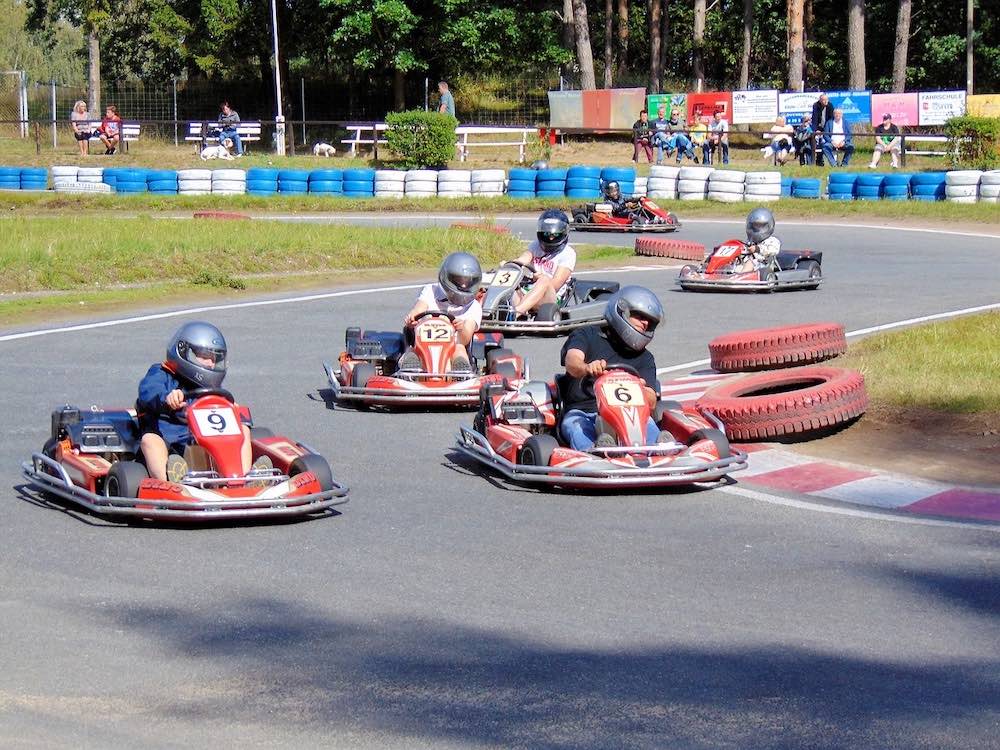
The Competitive Sport of Go-Kart Racing
Go-kart racing is a popular form of motorsport that involves racing small, open-wheel vehicles called go-karts. These vehicles are typically powered by small engines, such as two-stroke or four-stroke engines, and are designed for close, competitive racing on dedicated tracks.

Here are some key points to know about go-kart racing:
- Origins: Go-kart racing originated in the United States in the late 1950s. Art Ingels is often credited with building the first go-kart in 1956, using a surplus West Bend engine.
- Kart Types: Go-karts come in various types, including sprint karts, endurance karts, and superkarts. Sprint karts are the most common, designed for short, fast races on smaller tracks. Endurance karts are built for long-distance races, while superkarts are high-performance machines capable of reaching higher speeds.
- Tracks: Go-kart tracks can vary in size and configuration. Indoor tracks provide racing experiences regardless of weather conditions, while outdoor tracks offer a more traditional racing environment. Tracks may include straightaways, tight corners, hairpin turns, and other challenging features to test the drivers' skills.
- Safety: Safety is a crucial aspect of go-kart racing. Drivers are typically required to wear helmets, racing suits, gloves, and other protective gear. The karts are equipped with safety features such as roll cages, seatbelts, and impact-absorbing materials.
- Racing Classes: Go-kart racing is often divided into different classes based on driver age, experience, and kart specifications. Classes can range from kid karts for young children to professional categories for adults. This allows for fair competition and ensures drivers are racing against opponents of similar skill levels.
- Techniques: Go-kart racing requires skillful driving techniques. Drivers must learn to navigate corners, manage their speed, and execute overtaking maneuvers effectively. They also need to have a good understanding of racing lines, braking points, and vehicle dynamics to optimize their performance on the track.
- Competitive Levels: Go-kart racing serves as a stepping stone for many young drivers looking to pursue a career in motorsports. It helps them develop essential racing skills, including racecraft, car control, and understanding the dynamics of racing. Several professional racers, such as Lewis Hamilton and Sebastian Vettel, started their careers in go-karting.
- Accessibility: Go-kart racing is known for its accessibility. It offers an entry point to motorsport for enthusiasts of all ages. Karting facilities and clubs can be found worldwide, allowing people to participate in recreational races, leagues, and competitions.
- Professional Karting: In addition to amateur and recreational karting, there are professional go-kart racing series and championships. These events provide a platform for talented drivers to showcase their skills and compete at a higher level. Some popular professional karting championships include the CIK-FIA World Karting Championship and the Rotax Max Challenge.
- Thrilling Experience: Go-kart racing provides an exhilarating and adrenaline-filled experience for drivers. The close racing, low center of gravity, and responsive handling of the karts make for an exciting and competitive atmosphere.

Overall, go-kart racing provides an accessible and thrilling form of motorsport that caters to drivers of all ages and skill levels. It serves as a training ground for aspiring racers (such as Formula 1) while providing an enjoyable recreational activity for motorsport enthusiasts.




